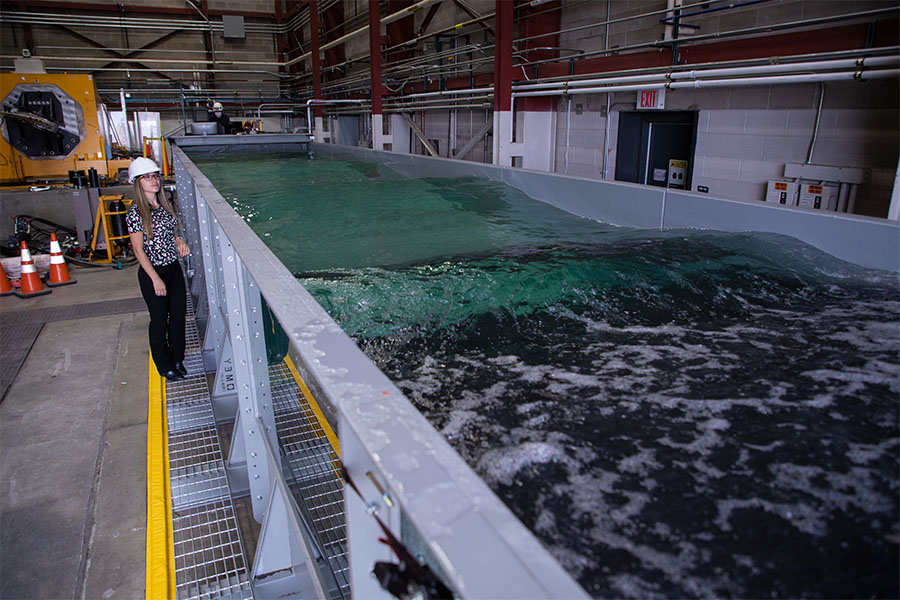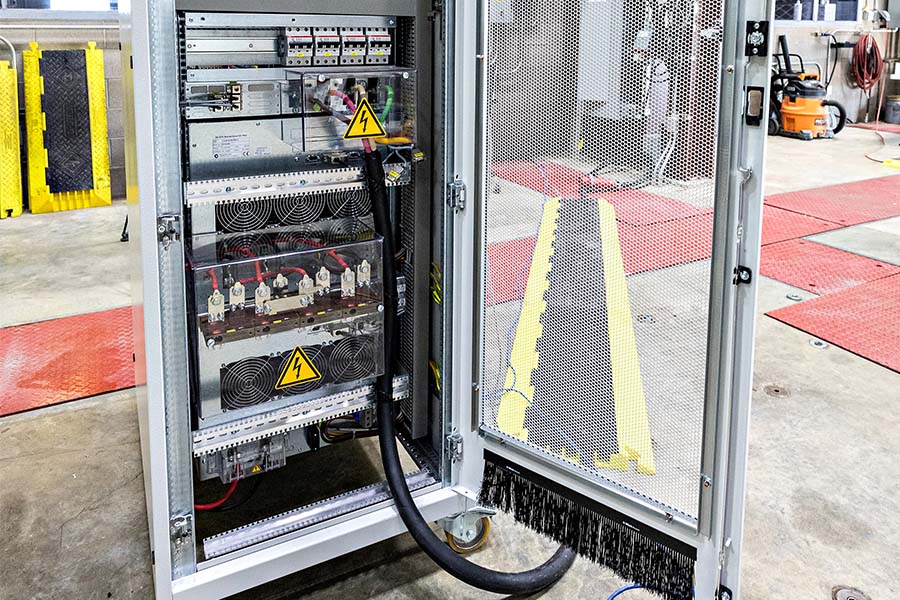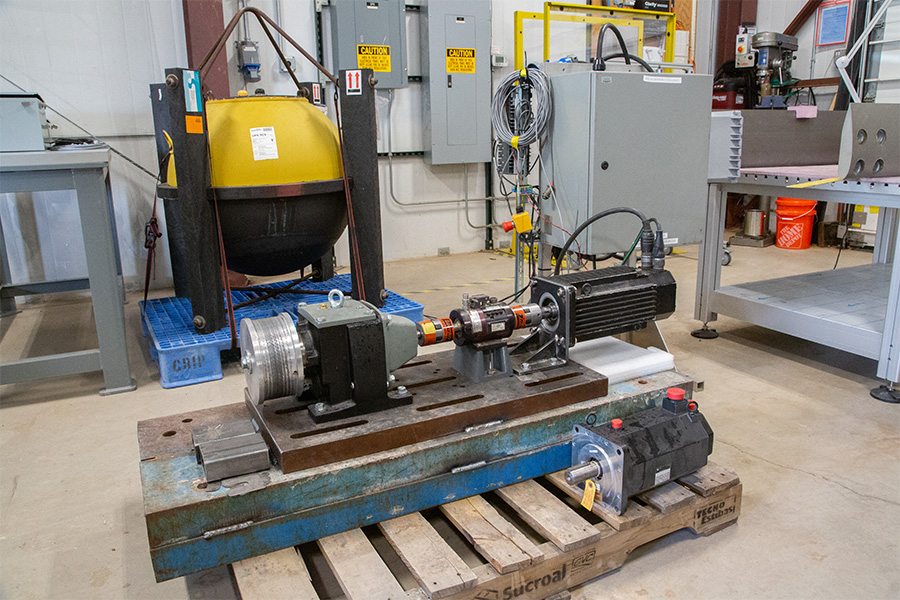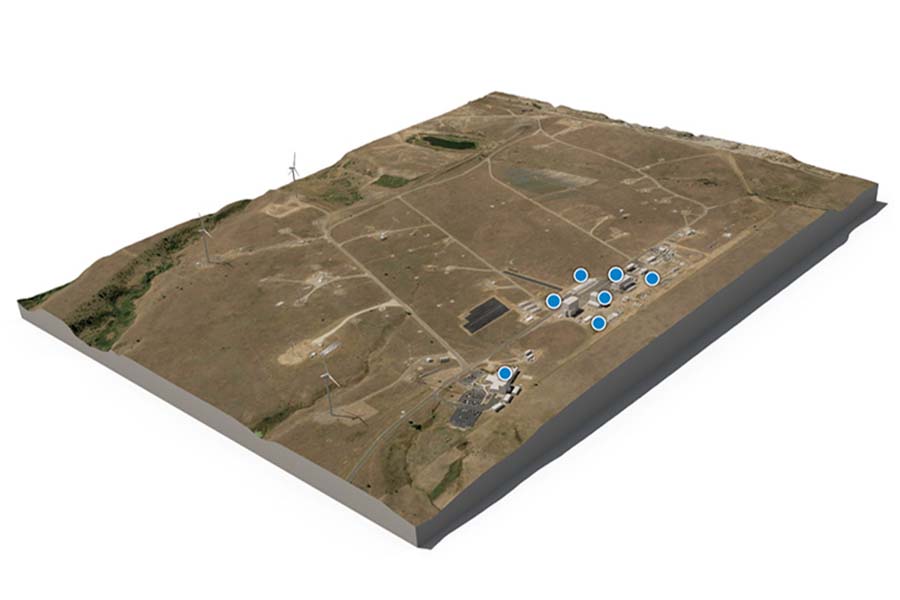WATER POWER 2022
For more than four decades, NREL's water power researchers have led efforts to develop and advance marine energy and hydropower technologies to help build efficient, cost-effective, and sustainable renewable energy systems.
In Fiscal Year 2022, NREL's water power team advanced science and engineering knowledge, modeling tools, research facilities, and data products to evolve the marine energy and hydropower industries. Both hydropower and marine energy can help accelerate the country's transition to a 100% carbon-emission-free energy system, and NREL's experts are providing the support needed to build a reliable, resilient, and cost-effective clean energy future.
To achieve this future, NREL's experts are helping modernize hydropower so facilities can generate more efficient, affordable, and sustainable power while providing critical base load and ancillary services to the grid. And they're helping guide the marine energy industry, working to refine novel technologies to harness energy from ocean and river waves, tides, currents, and ocean thermal gradients. Soon, marine energy could power coastal and island communities, support the growing blue economy, and, eventually, help decarbonize the U.S. power grid.
Over the past year, our experienced team of water power researchers added new data and features to our state-of-the-art models, which can estimate the potential costs and performance of novel technology designs. We also leveraged NREL's unique world-class facilities and expertise to help technology developers refine their designs and lower the risk and cost to develop their promising technologies.
Our experts also traveled outside the lab to work in the field, to help hydropower owners and operators and marine energy startups analyze and overcome technical challenges.
A clean energy future also needs a larger, more versatile workforce—one that's diverse, equitable, and inclusive—to continue to advance hydropower and marine energy technologies. NREL researchers are committed to fostering tomorrow's water power workforce through activities focused on the education pipeline, workforce engagement, and development programs. Our teams also work directly with underserved communities and those already experiencing significant climate change impacts to provide equitable access to clean energy technologies.
At NREL, our scientists and researchers are enabling the country's rivers and seas to become sources of low-cost, sustainable energy for the U.S. power grid, ocean industries, and coastal communities that increasingly depend on cleaner, more affordable power.





Program Highlights
For more research highlights, check out our Impacts page and subscribe to the quarterly newsletter, The Current.
This year, NREL's water power team managed or received:
Research Highlights
NREL's water power research collaborations spanned multiple disciplines and technologies. Here's a quick glimpse at some of NREL's Fiscal Year 2022 water power achievements and impacts.
Securing Our Water Future: NREL's Research in Desalination of Nontraditional Water Sources
NREL researchers are designing technologies that could enable U.S. communities to access nontraditional water sources, such as seawater and wastewater, and create more resilient, cost-effective water supplies. Already, researchers have developed a device that can harness the energy in ocean waves to desalinate—or remove salts and other contaminants—from salt water. The lab is also exploring more water treatment technologies through competitions and collaborations.
Preparing the Power Sector To Navigate Climate and Water Risks
Many power plants—including natural gas, nuclear, and coal—depend on water to safely operate. But as the climate changes, so will water availability and other environmental factors, which could threaten the reliability of today's power system and tomorrow's clean energy grid. That's why NREL researchers are studying the risks of climate and water changes to the U.S. power grid and developing tools to help mitigate those risks.
Powering the Blue Economy Foundational Research and Development
Coastal and island communities, as well as offshore industries, like aquaculture farms, marine research, and military missions, need a sustainable energy source to power their lives and livelihoods while conserving the ocean. To help power this so-called "blue economy" with renewable marine energy, NREL researchers are exploring improved marine energy technologies, creating tools to help developers hone their promising devices, and running competitions to encourage teams to pursue novel ideas.
In-Water Data Acquisition Tool Supports Four Marine Energy Projects
Today, the budding marine energy industry is putting its technology prototypes through their first open-water trials, a critical step to learn how they function in the real world. But collecting data in a salty, tumultuous environment is not always easy. That's why NREL researchers designed the Modular Ocean Data Acquisition system that developers can use to gather the data they need to refine their promising technologies.
Inspiring Tomorrow's Water Power Workforce To Lead the Clean Energy Revolution
A clean energy future needs a larger, more adaptable workforce—one that's more diverse, equitable, and inclusive—to improve both hydropower operations and marine energy technologies. NREL researchers are committed to building tomorrow's water power workforce through industry engagement focused on meeting current and future water power workforce needs.
Modeling the Path Forward for Marine Energy
Marine energy companies are closing in on commercial success. To help guide the industry over the final hurdles, NREL experts design tools that can reduce the costs and risks of developing novel marine energy technologies. With quick and easy access to high-quality data on marine energy resources (including waves) available at specific sites or a device's estimated costs, developers can accelerate the journey from lab bench to market.
Improved Cost Estimates To Boost Pumped Storage Hydropower Construction
Pumped storage hydropower systems are the largest source of energy storage for the U.S. power grid. As the country's grid evolves, integrating more variable energy sources, such as solar power and wind energy, pumped hydro could play a key role in ensuring the grid is not only carbon free but also reliable and resilient. NREL researchers are developing improved cost estimates and cost models to give developers the data they need to decide where and when to construct new pumped hydro facilities to support the country's evolving energy grid.
Three Modeling Tools Accelerate the Development of Marine Energy Technologies
Before today's early-stage marine energy technologies can harness the immense power flowing through U.S. rivers and oceans, they need to overcome a few challenges, like a volatile ocean and high development costs. NREL researchers have developed several highly accurate, customizable, and robust modeling tools to help developers understand and overcome their technological challenges.
Prizes Sustain NREL Water Power Innovation
NREL administers several prizes designed to encourage and support innovation that could help the water power industry grow and improve. Funded and hosted by the U.S. Department of Energy's Water Power Technologies Office and partnering offices, these competitions run throughout the year and tap into a diverse community of contributors who leverage prize money to craft and build solutions for targeted challenges.
Charting Hydropower's Role in the Next-Generation Grid
Hydropower and pumped storage hydropower already play a key role in providing flexible, low-carbon electricity to the U.S. power grid, and this role is expected to become even more valuable as the grid evolves to include more variable renewable energy sources. That's why NREL researchers are using new data and modeling capabilities to analyze how the U.S. electricity sector could invest in hydropower and pumped hydro and further explore its future role in a clean energy grid.
Collegiate Competitions Spark Curiosity and Careers in Water Power
To inspire and grow a new generation of skilled workers to lead the country's energy revolution, NREL partners with the U.S. Department of Energy's Water Power Technologies Office to run two water power competitions. Both provide undergraduate and graduate students with hands-on experience in the hydropower and marine energy industries as well as the opportunity to devise innovative solutions to complex challenges that could pave the way to a clean energy future.
Facilities and Capabilities
Featured Videos on YouTube
Browse our multimedia collection to find out how NREL is working in water power.
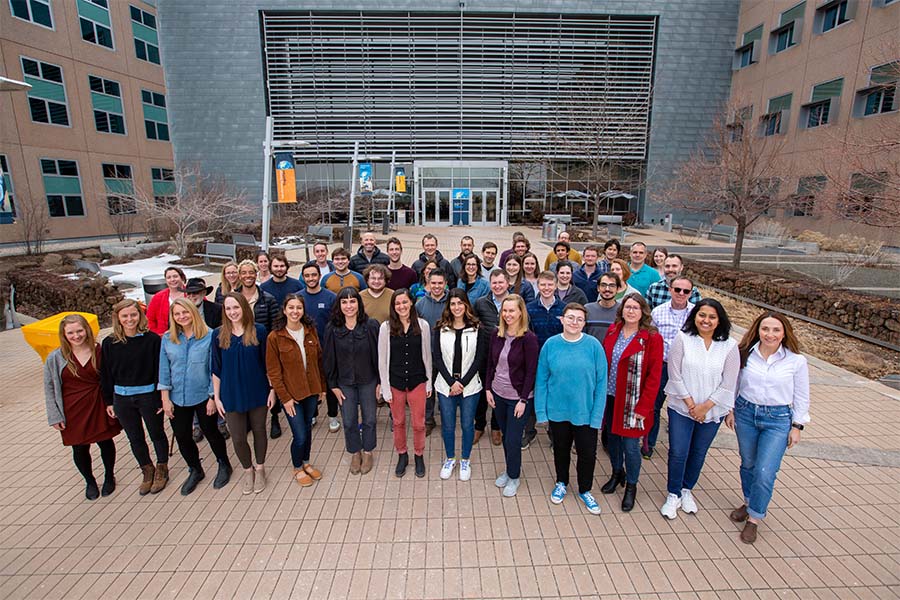
Meet the Team
Meet some of the staff powering NREL's water power research and development in our Beneath the Surface profile showcase. You may also contact the NREL water power team for more information on water power accomplishments or ways to collaborate with the lab.
Subscribe to the water power newsletter, The Current, to receive water power updates via email.
We are interested in your feedback on our research and are always exploring opportunities for collaboration. Please reach out to us at Water Power with feedback and questions. Interested in partnering with us? Visit Work With Us to find out more.
Share
Last Updated Jan. 28, 2025

